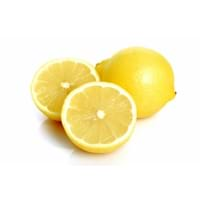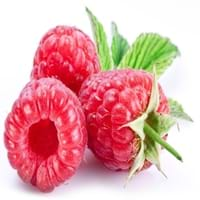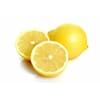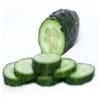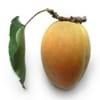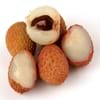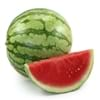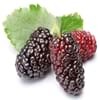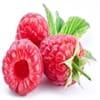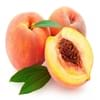लिंबू आणि रास्पबेरी
फायदे
आरोग्यासाठी फायदे
संधिवात उपचार, दमा उपचार, कर्करोग प्रतिबंध, मुतखडा उपचार, बद्धकोष्ठता प्रतिबंधित करते, रक्त शुद्धीकरण, संधिवात उपचार
कर्करोग प्रतिबंध, हृदयाची काळजी, मेक्युलर र्हास प्रतिबंधित करते, रक्ताभिसरण समस्या कमी करते
सामान्य फायदे
रोगप्रतिकार प्रणाली चांगली करण्यास मदत करते, डोकेदुखी कमी करते, ताप कमी करते, पचनास मदत करते, तापवर उपचार, निरोगी कोलेस्ट्रॉल पातळी कायम राखते, सर्दीवर उपचार
दाह कमी करण्याचे गुणधर्म, रक्तातील साखरेची पातळी नियंत्रित करते, पचनास मदत करते, डोळ्यांची काळजी, वजन कमी करण्यास मदत करते
त्वचेचे फायदे
सूर्य प्रकाशाने होणारा त्वचेचा क्षोभ बरे करतो, त्वचेवरील सूरकुत्या कमी करते, त्वचा टवटवीत करते, पुरळांवर उपचार, त्वचा रोग उपचार
वृद्धत्वाची गती कमी करते, त्वचेचा रंग निखारते
केसांचे फायदे
केस गळणे थांबवते, कोंड्याचे उपचार
आर्द्र पदार्थसारखा उपयोग, केसांच्या वाढीवर नियंत्रण ठेवते, चमकदार केस
ऍलर्जी
ऍलर्जी लक्षणे
इसब, अंगावर उठणार्या पित्ताच्या गाठी, दाह, खाज सुटणे, त्वचेवर पुरळ, सूज येणे
श्वास घेण्यात अडचण, इसब, अंगावर उठणार्या पित्ताच्या गाठी, खाज सुटणे, बंद नाक, वाहणारे नाक, शिंका येणे, पानसर डोळे, घरघर लागणे
दुष्परिणाम
डाययुरेटीक प्रभाव, छातीत जळजळ, दात किडणे, सूर्य प्रकाशाने होणारा त्वचेचा क्षोभ होऊ शकतो
असोशी प्रतिक्रिया
उपयुक्त आहे
गर्भवती महिला
Yes
Yes
स्तनदा महिला
Yes
Yes
खाण्याची सर्वोत्तम वेळ
जेवणासोबत, रिक्त पोटी लिंबू पाणी पिणे सर्वोत्तम आहे., रात्री आणि झोपायच्या आधी घेऊ नका
सकाळी नाश्त्यात (किंवा उपाशी पोटी), उशिरा दुपारी एक नाश्ता म्हणून, जेवण केल्यानंतर खाऊ नका, सकाळी (दुपारच्या जेवणाआधी)
पोषण
प्रमाण
100 ग्रॅम
100 ग्रॅम
कर्बोदकं
9.30 ग्रॅम
99+
11.94 ग्रॅम
99+
तंतू
2.80 ग्रॅम
22
6.50 ग्रॅम
6
साखर
2.50 ग्रॅम
99+
4.42 ग्रॅम
99+
प्रथिने
1.10 ग्रॅम
21
1.20 ग्रॅम
19
प्रथिने आणि कर्बोदकांचे गुणोत्तर
0.12
14
0.10
15
जीवनसत्त्वे
अ जीवनसत्व (रेटिनॉल)
3.00 मैक्रोग्रॅम
32
2.00 मैक्रोग्रॅम
33
ब1 जीवनसत्व (थायामीन)
0.04 मिलिग्रॅम
24
0.03 मिलिग्रॅम
30
ब2 जीवनसत्व (रायबोफ्लेविन)
0.02 मिलिग्रॅम
38
0.04 मिलिग्रॅम
24
ब3 जीवनसत्व (नायसिन)
0.10 मिलिग्रॅम
99+
0.60 मिलिग्रॅम
26
ब5 जीवनसत्व (पँटोथिनिक ऍसिड)
0.19 मिलिग्रॅम
34
0.33 मिलिग्रॅम
11
ब6 जीवनसत्व (पायरिओडॉक्सिन)
0.08 मिलिग्रॅम
20
0.06 मिलिग्रॅम
32
ब9 जीवनसत्व (फॉलीक ऍसिड)
11.00 मैक्रोग्रॅम
24
21.00 मैक्रोग्रॅम
13
क जीवनसत्व (ऍस्कॉर्बिक ऍसिड)
53.00 मिलिग्रॅम
15
26.20 मिलिग्रॅम
35
इ जीवनसत्व (टोकोफेरॉल)
0.15 मिलिग्रॅम
33
0.87 मिलिग्रॅम
12
के जीवनसत्व (फायलोचीनों)
0.00 मैक्रोग्रॅम
36
7.80 मैक्रोग्रॅम
10
लायकोपेन
0.00 मैक्रोग्रॅम
9
0.00 मैक्रोग्रॅम
9
ल्युटेन + झिआक्सानथीन
11.00 मैक्रोग्रॅम
30
136.00 मैक्रोग्रॅम
7
चोलीन
5.10 मिलिग्रॅम
24
12.30 मिलिग्रॅम
3
चरबी
0.30 ग्रॅम
28
0.65 ग्रॅम
12
खनिजे
पोटॅशियम
138.00 मिलिग्रॅम
99+
151.00 मिलिग्रॅम
99+
लोह
0.60 मिलिग्रॅम
21
0.69 मिलिग्रॅम
18
सोडियम
2.00 मिलिग्रॅम
18
1.00 मिलिग्रॅम
20
कॅल्शियम
26.00 मिलिग्रॅम
17
25.00 मिलिग्रॅम
18
मॅग्नेशियम
8.00 मिलिग्रॅम
27
22.00 मिलिग्रॅम
11
जस्त
0.06 मिलिग्रॅम
27
0.42 मिलिग्रॅम
6
फॉस्फरस
16.00 मिलिग्रॅम
29
29.00 मिलिग्रॅम
18
मँगनीज
0.03 मिलिग्रॅम
99+
0.67 मिलिग्रॅम
5
तांबे
0.04 मिलिग्रॅम
99+
0.09 मिलिग्रॅम
24
सेलेनियम
0.40 मैक्रोग्रॅम
13
0.20 मैक्रोग्रॅम
15
चरबीयुक्त आम्ल
ओमेगा 3s
26.00 मिलिग्रॅम
23
126.00 मिलिग्रॅम
5
ओमेगा 6s
63.00 मिलिग्रॅम
28
249.00 मिलिग्रॅम
7
स्टेरॉल
पाण्याचा अंश
88.98 ग्रॅम
15
85.75 ग्रॅम
35
राख
0.30 ग्रॅम
38
0.46 ग्रॅम
29
कॅलरीज
प्रमाण
100 ग्रॅम
100 ग्रॅम
सोललेल्या फळांमधील उष्मांक
उपलब्ध नाही
53.00 किलोकॅलरी
21
न सोललेल्या फळांमधील उष्मांक
29.00 किलोकॅलरी
24
उपलब्ध नाही
गोठलेल्या फळांमधील उष्मांक
22.00 किलोकॅलरी
27
52.00 किलोकॅलरी
13
वाळलेल्या फळांमधील उष्मांक
267.00 किलोकॅलरी
25
363.00 किलोकॅलरी
9
कॅन केलेल्या फळांमधील उष्मांक
21.00 किलोकॅलरी
25
91.00 किलोकॅलरी
8
अन्नामध्ये उष्मांक
रसामध्ये उष्मांक
22.00 किलोकॅलरी
99+
68.00 किलोकॅलरी
18
जॅममध्ये उष्मांक
250.00 किलोकॅलरी
19
150.00 किलोकॅलरी
33
पाई मध्ये उष्मांक
285.00 किलोकॅलरी
24
169.00 किलोकॅलरी
99+
वैशिष्ट्ये
प्रकार
लिंबूवर्गीय, झाडाचे फळ
बोरासारखे बी असलेले लहान फळ
हंगाम
बारामही
उन्हाळा
जाती
आवलॉन लिंबू, बेअर्स लिंबू, बुद्धा हॅण्ड, बुश लिंबू, सिट्रॉन, एऊरेका लिंबू, दोरशापो लिंबू, फिंगर सिट्रॉन आणि फिनो सिट्रॉन
आमिटी, ऑगस्ट लाल, बोयने, कॅन्बी, कॅरोलीन, धूमकेतू, डिन्कुम, डॉर्मन लाल, लॅथम, मीकेर आणि लॉरेन
बिनबियांच्या विविधता
Yes
No
रंग
पिवळा, पिवळसर-नारिंगी
काळा, जांभळा, लाल, पिवळा
आतील रंग
पिवळा
गुलाबी
आकार
गोल
शंकूच्या आकाराचे
घडण
रसदार
रसाळ
चव
आंबट
गोड
उत्पत्तिस्थान
चीन, भारत
युरोप, उत्तर आशिया
वाढ
झाडे
झाडे
लागवड
मातीचा प्रकार
पाण्याचा निचरा होणारी
वालुकामय चिकणमाती
मातीत pH
5.5-6.5
5.8-6.5
हवामान
गरम, भरपूर सूर्यप्रकाश असणारा
थंड
तथ्ये
बद्दल तथ्य
- डायजेस्टिव प्रॉब्लेममुले तुम्ही त्रस्त असाल तर दररोज सकाळी कोमट पाण्यामध्ये थोडासा मध आणि लिंबाचा रस मिसळून हे मिश्रण प्यावे. यामुळे पोट साफ राहते.
- भारतामध्ये मुख्यत: गोल्डन एव्हरग्रीन रास्पबेरी आढळतात. या पिवळसर रंगाच्या असतात. काही प्रमाणात लाल व काळ्या रास्पबेरीही आढळतात.
- युरोपीय देशांमध्ये यांचा खाद्यपदार्थांमध्येही वापर केला जातो.
मद्यार्क पेयं मध्ये
मद्य
Yes
Yes
बिअर
Yes
Yes
स्पिरिट
Yes
Yes
कॉकटेल
Yes
Yes
उत्पादन
अव्वल निर्माते
चीन
रशिया
अन्य देश
अर्जेंटिना, ब्राझील, भारत, इराण, इटली, मेक्सिको, स्पेन, तुर्की, युनायटेड स्टेट्स ऑफ अमेरिका
अझरबैजान, कॅनडा, मेक्सिको, पोलंड, सर्बिया, स्पेन, युक्रेन, युनायटेड किंगडम, युनायटेड स्टेट्स ऑफ अमेरिका
अव्वल आयातकर्ता
युनायटेड स्टेट्स ऑफ अमेरिका
युनायटेड स्टेट्स ऑफ अमेरिका
अव्वल निर्यातदार
मेक्सिको
पोलंड
वैज्ञानिक नाव
वनस्पति नांव
सिटरस लिमोन
रूबस इदएूस
प्रतिशब्द
उपलब्ध नाही
उपलब्ध नाही
वर्गीकरण
डोमेन
युकार्या
युकार्या
राज्य
प्लान्टी
प्लान्टी
उपराज्य
त्रचीओबियोण्ता
त्रचीओबियोण्ता
विभागणी
मॅग्नोलिलोफायटा
मॅग्नोलिलोफायटा
वर्ग
मॅग्नोलिओप्सिडा
मॅग्नोलिओप्सिडा
उपवर्ग
रोसीडे
रोसीडे
क्रम
सेपिनडेल्स
रोसेल्स
कुटुंब
रुटासी
रोसासी
पोटजात
लिंबूवर्गीय
रुबुस
प्रजाती
सी. लिमोन
आर. आइडयेयस
सर्वसामान्य गट
लिंबूवर्गीय फळ
गुलाब
|
||
|
||
|
